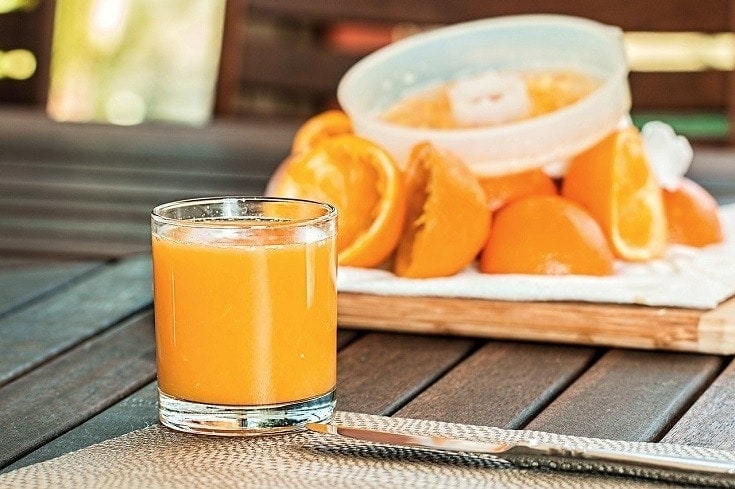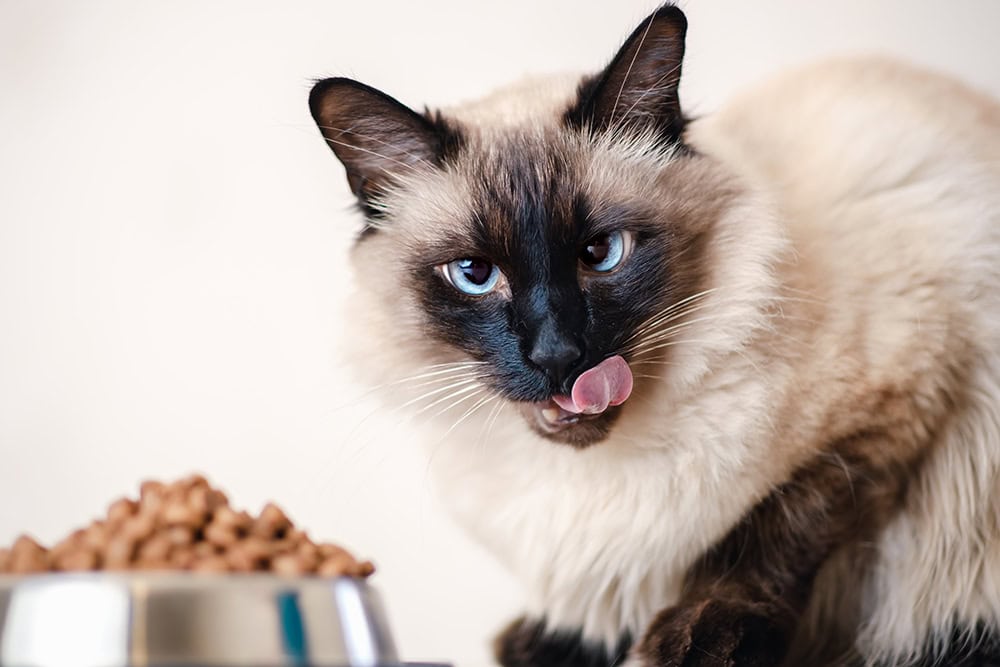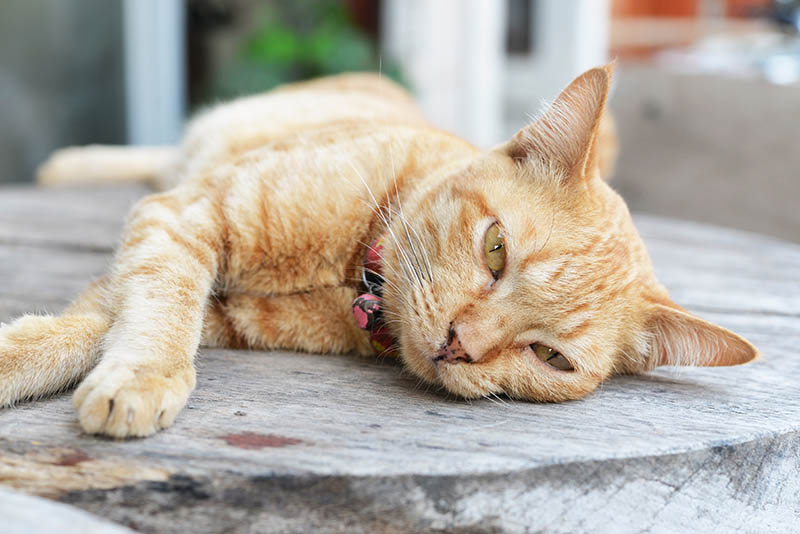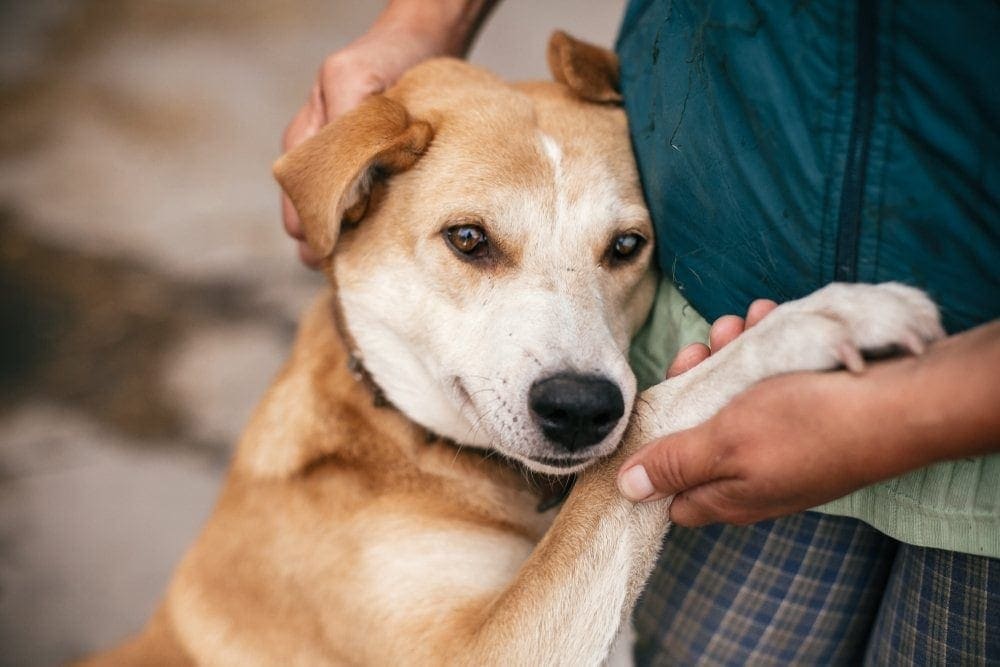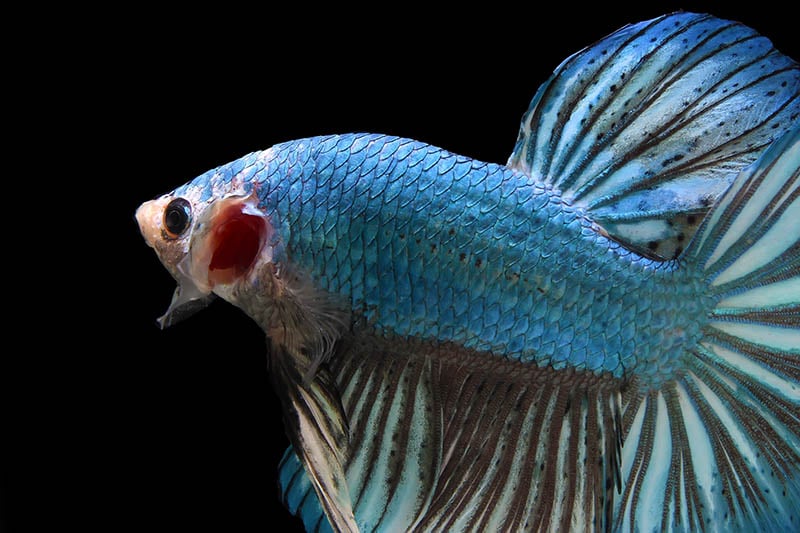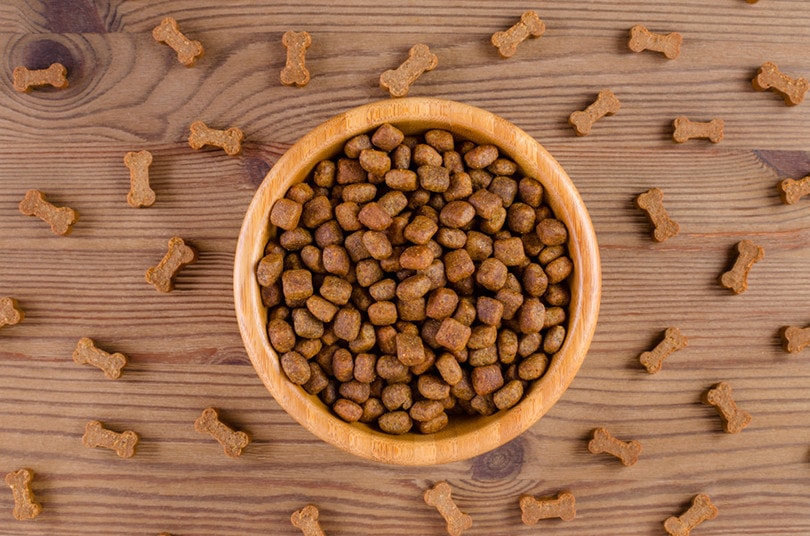7 Surprising Facts About Tabby Cats: Vet-Reviewed Genetics, Traits & History
Updated on
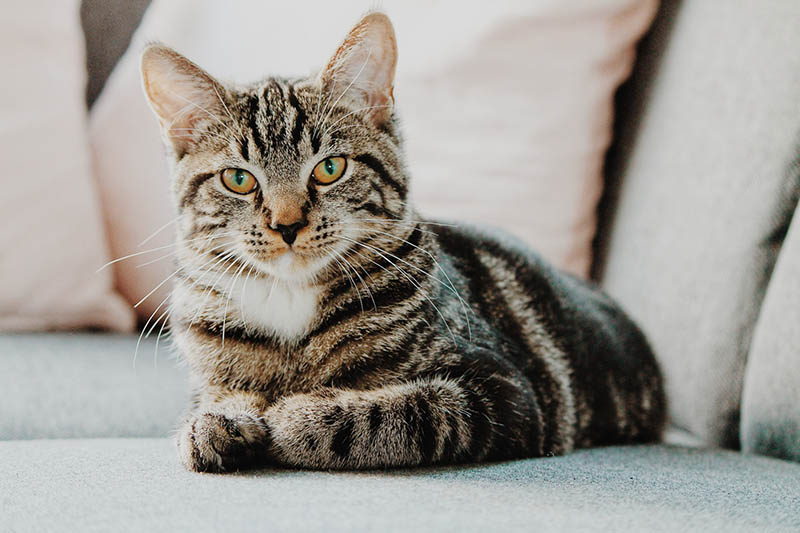
Often confused with a breed, tabby is a common type of coat pattern exhibited by many different individual cat breeds. There’s a lot to love about these pint-sized predators, whether your tabby has a striped, flecked, or banded coat. Despite being so popular, you’d be shocked that most people don’t really even know much about our favorite felines. To help shed light on all the most fascinating facts about tabby cats, join us below on a tabby-filled adventure.
The 7 Tabby Cat Facts:
1. Tabbies Have an “M” on Their Foreheads
The most unifying mark of a tabby cat is the furrowed “M” shape on their foreheads. The exact shape, size, and color might shift a little from cat to cat, but the same basic shape is on virtually every tabby out there.
Interestingly, there are numerous religious interpretations for why they have the M. Most notable is Islam, where legend has it that Abu Hurairah’s cat saved the prophet Muhammad from a snake. Some stories postulate that this was the first tabby cat ever. However, some interpretations of Islam consider this to be a misconception.

2. The Name Tabby Comes From Ancient Iraq
The word “tabby” has such a basic sound to it that you probably never stopped to wonder where exactly it came from. A lot farther back in history than you’d think—the 14th century Baghdad in Iraq, to be precise! Tabby coats are thought to have been compared to a valuable Iraqi silk called “atabis” in Middle French, produced in the Attabiy district of Baghdad. The term was quickly shortened to “tabis” and finally the eminently catchy “tabby.” Presumably, the word was eventually spoken to English speakers, who coined the immortal “tabby cat” we still use today.
3. They Come in a Stunning Variety of Colors & Types
Tabby cats come in a bewilderingly vast palette of colors, with no less than five distinct coat patterns under the tabby umbrella. Brown and black are common tabby colors, but gray, orange, red, and cream are a few less common colors you may be familiar with.
As far as coat types go, tabby comes in five forms: ticked, patched, splotched, spotted, and mackerel. Certain combinations of color and coat type are more common in specific breeds, like how most Bengals have a mackerel coat.
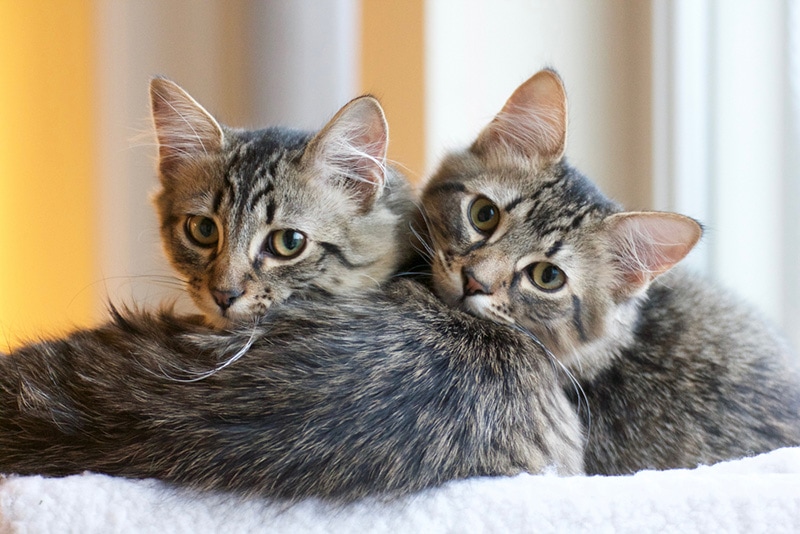
4. Most Ginger Tabbies Are Male
One of the weirdest feline genetic twists of fate is that almost all orange or ginger tabby cats are male. You see, coat color is tied to specific chromosomes. The orange fur gene is tied to the X chromosome, meaning a male cat only needs orange fur in his mother’s bloodline to potentially be ginger. About 80% of ginger tabbies are male, with just 20% females. This is kind of the opposite of the calico coloration, which is similarly almost exclusive to female cats.
5. Not All Tabbies Are the Same Breed
We touched on this earlier, but tabby is just a coat pattern that many domesticated cat breeds sport. The Domestic Shorthair is far and away the most common breed to have tabby coats, but tabby is common in Maine Coons, Bengals, Persians, Abyssinians, Manx, Bobtails, Scottish Folds, and many more. All these breeds are usually considered friendly to people, but there will always be more shy kitties too.
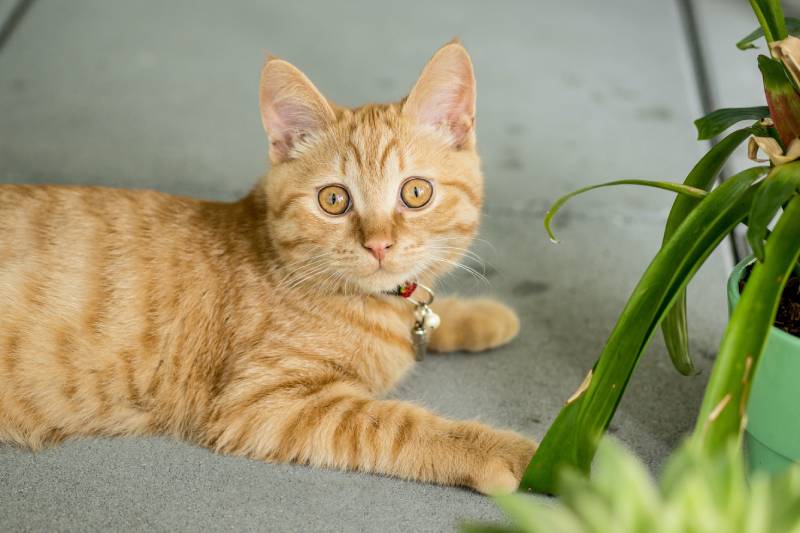
6. Tabbies Are Social Kitties
Silky-coated tabby cats are anecdotally some of the friendliest toward humans, perhaps as an evolutionary incentive. Cats that hung around humans had more access to food, water, and prey to hunt, not to mention shelter from the unrelenting elements. All in all, that helped contribute to these cats having more surviving offspring than feral cats who had to contend with predators, weather, disease, hunting for food, and so on.
However, this isn’t a hard and fast rule and a tabby’s temperament is more influenced by their genetics than the broad and vague “tabbies are friendly” tidbit. Generally, though, tabbies are affectionate and tolerant toward children plus other pets. Early socialization helps reinforce a social nature more than anything, so socialize your tabby early and often!
7. Tabby Coats Are Believed to Be Great Camouflage
The tabby coat is believed to be like the hunter’s camo jacket of the cat world, and it’s great at helping them melt away into natural scenery to stalk prey. Striped cats blend in with tall grasses, spotted tabbies fade into forests, and mackerel tabbies stalk the forests like their proud tiger cousins. Besides helping to hunt, this natural camouflage helps to protect cats from larger predators.
However, this is merely a theory; many animals have a visual interpretation of the world that’s different from ours and might be able to see a tabby coat “hiding” in the shrubbery with relative ease.
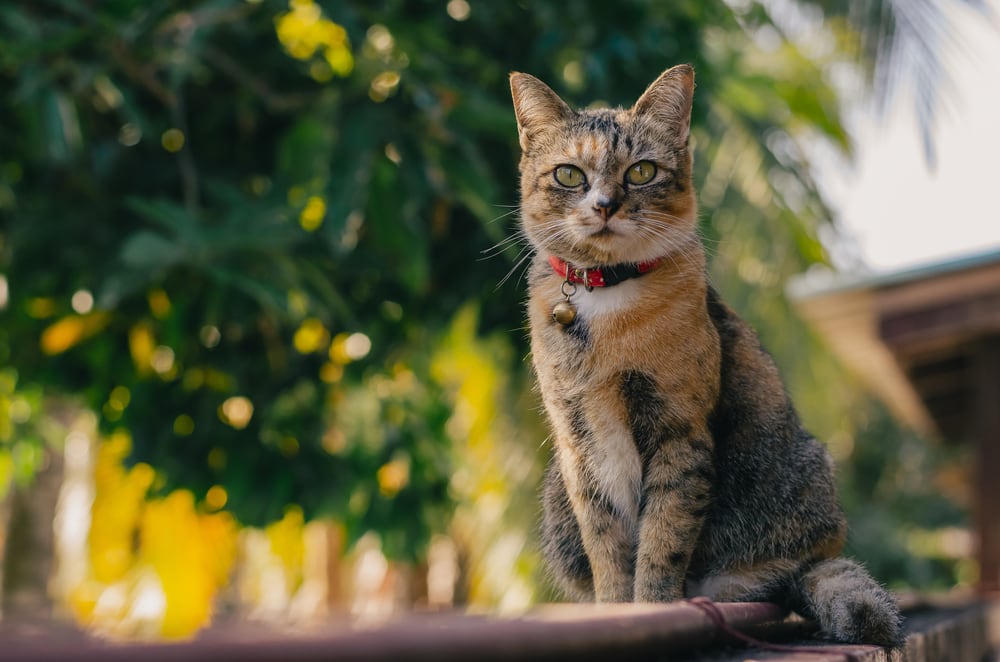
Final Thoughts
There’s much more to the ubiquitous tabby cat than meets the eye, from their name’s exotic origins to their giant array of breeds. Whether you wanted to learn a bit more about your beloved tabby or love feline trivia, we hope you’ve learned a few things about tabbies from our article today.
Featured Image Credit: Erik Jan Leusink, Unsplash



